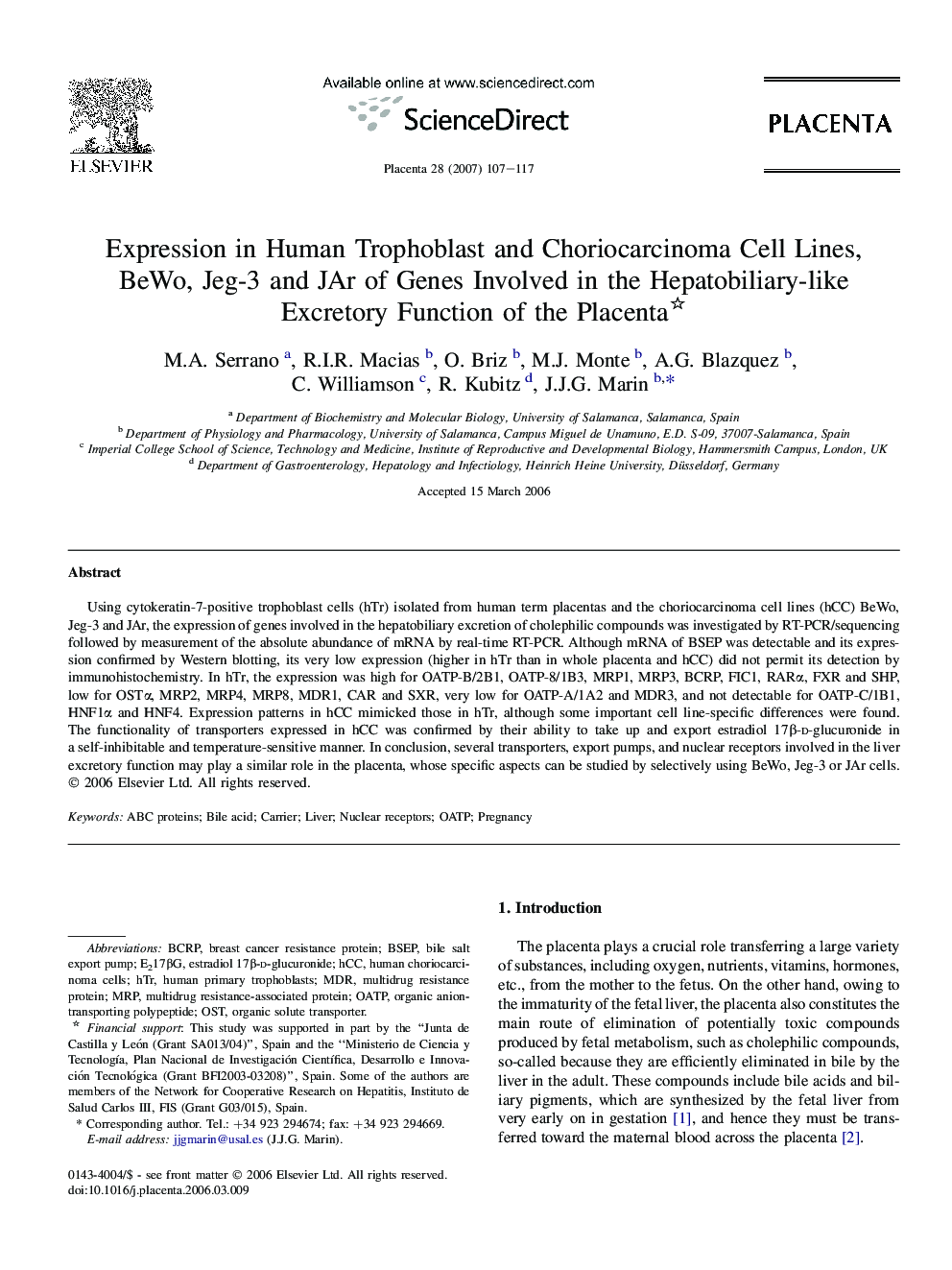| Article ID | Journal | Published Year | Pages | File Type |
|---|---|---|---|---|
| 2789805 | Placenta | 2007 | 11 Pages |
Using cytokeratin-7-positive trophoblast cells (hTr) isolated from human term placentas and the choriocarcinoma cell lines (hCC) BeWo, Jeg-3 and JAr, the expression of genes involved in the hepatobiliary excretion of cholephilic compounds was investigated by RT-PCR/sequencing followed by measurement of the absolute abundance of mRNA by real-time RT-PCR. Although mRNA of BSEP was detectable and its expression confirmed by Western blotting, its very low expression (higher in hTr than in whole placenta and hCC) did not permit its detection by immunohistochemistry. In hTr, the expression was high for OATP-B/2B1, OATP-8/1B3, MRP1, MRP3, BCRP, FIC1, RARα, FXR and SHP, low for OSTα, MRP2, MRP4, MRP8, MDR1, CAR and SXR, very low for OATP-A/1A2 and MDR3, and not detectable for OATP-C/1B1, HNF1α and HNF4. Expression patterns in hCC mimicked those in hTr, although some important cell line-specific differences were found. The functionality of transporters expressed in hCC was confirmed by their ability to take up and export estradiol 17β-d-glucuronide in a self-inhibitable and temperature-sensitive manner. In conclusion, several transporters, export pumps, and nuclear receptors involved in the liver excretory function may play a similar role in the placenta, whose specific aspects can be studied by selectively using BeWo, Jeg-3 or JAr cells.
